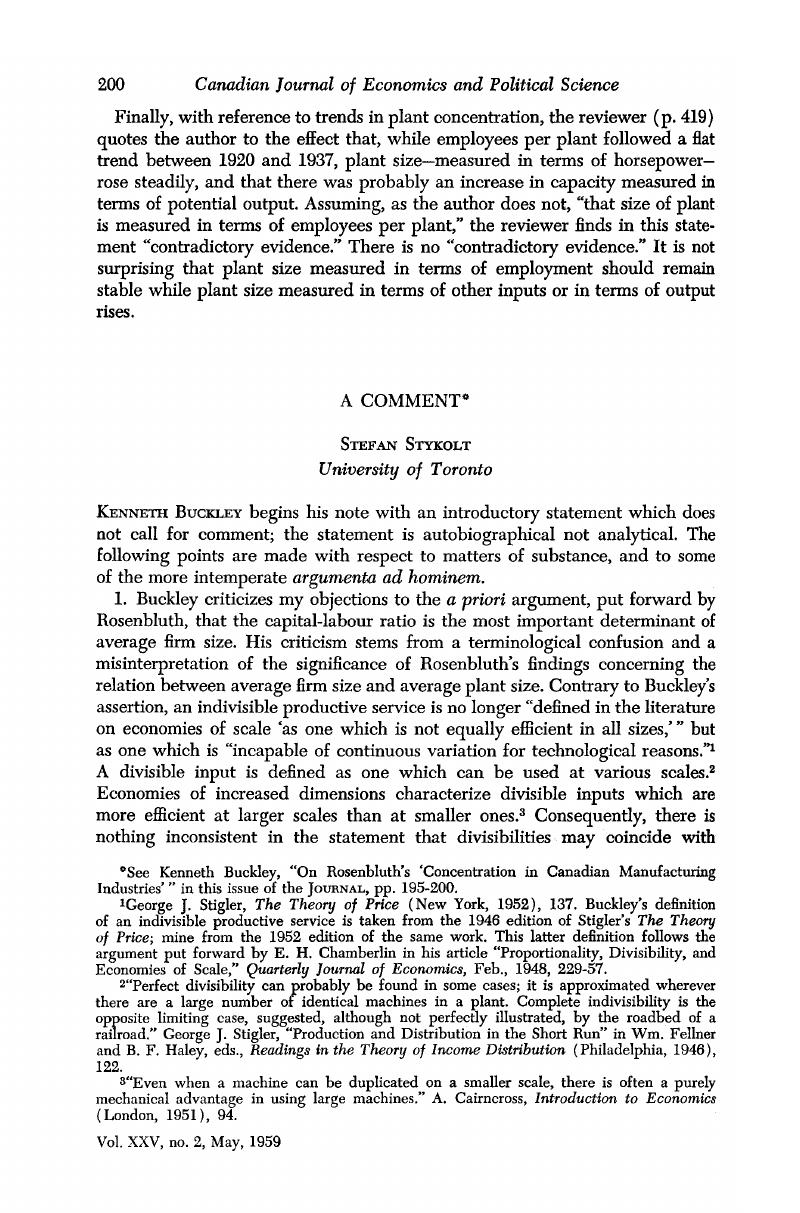No CrossRef data available.
Article contents
A Comment*
Published online by Cambridge University Press: 07 November 2014
Abstract

- Type
- Notes and Memoranda
- Information
- Canadian Journal of Economics and Political Science/Revue canadienne de economiques et science politique , Volume 25 , Issue 2 , May 1959 , pp. 200 - 204
- Copyright
- Copyright © Canadian Political Science Association 1959
Footnotes
See Kenneth Buckley, “On Rosenbluth's ‘Concentration in Canadian Manufacturing Industries’” in this issue of the Journal, pp. 195-200.
References
1 Stigler, George J., The Theory of Price (New York, 1952), 137.Google Scholar Buckley's definition of an indivisible productive service is taken from the 1946 edition of Stigler's The Theory of Price; mine from the 1952 edition of the same work. This latter definition follows the argument put forward by Chamberlin, E. H. in his article “Proportionality, Divisibility, and Economies of Scale,” Quarterly Journal of Economics, 02, 1948, 229–57.CrossRefGoogle Scholar
2 “Perfect divisibility can probably be found in some cases; it is approximated wherever there are a large number of identical machines in a plant. Complete indivisibility is the opposite limiting case, suggested, although not perfectly illustrated, by the roadbed of a railroad.” Stigler, George J., “Production and Distribution in the Short Run” in Fellner, Wm. and Haley, B. F., eds., Readings in the Theory of Income Distribution (Philadelphia, 1946), 122.Google Scholar
3 “Even when a machine can be duplicated on a smaller scale, there is often a purely mechanical advantage in using large machines.” Cairncross, A., Introduction to Economics (London, 1951), 94.Google Scholar
4 Rosenbluth, Gideon, Concentration in Canadian Manufacturing Industries (Princeton, N.J., 1957), 38–9.Google Scholar
5 “Production and Distribution in the Short Run,” 122 (italics added).
6 Villard, Henry H., “Competition, Oligopoly and Research,” Journal of Political Economy, LXVI, 12, 1958, 484–5.Google Scholar
7 See for instance: Rosenbluth, , Concentration, 14–5, esp.Google Scholar: “To be sure that our measures of concentration would be economically significant, we limited our cross-section study to those industries in which the firms could be reasonably regarded as close competitors” (italics added).
8 Kopanitsas, D. E., “Differential Prices for the Services of Ships Belonging to the Same General Class: A Case of Oligopoly,” Journal of the Royal Statistical Society, Series A (General), CXXI, Part 2, 1958, 216–22.CrossRefGoogle Scholar
9 Cambridge, Mass., 1956.
10 Rosenbluth, , Concentration, 61–2.Google Scholar




